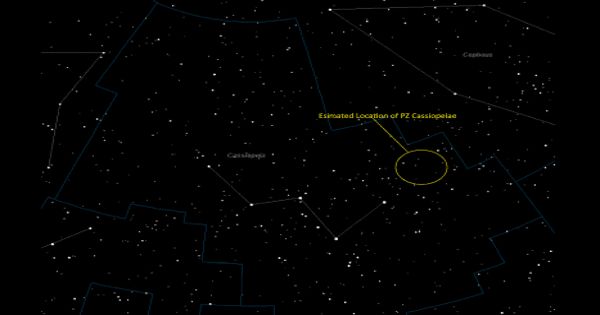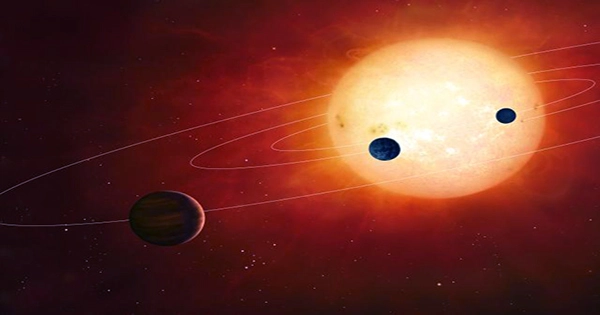Using NASA’s Hubble Space Telescope and a total lunar eclipse, researchers discovered Earth’s own brand of sunscreen ozone in our atmosphere. By observing potential “biosignatures” on exoplanets, this method model how astronomers and astrobiology researchers will look for evidence of life beyond Earth (planets around other stars).
Hubble has a 2.4 m (7 ft 10 in) mirror, and its five main instruments look at the electromagnetic spectrum in the ultraviolet, visible, and near-infrared wavelengths. Hubble’s orbit allows it to collect extraordinarily high-resolution photos with significantly less background light than ground-based telescopes due to its orbit outside the distortion of Earth’s atmosphere.
Hubble did not take a direct look at Earth. Instead, the astronomers utilized the Moon as a mirror to reflect sunlight that had traveled through Earth’s atmosphere and returned to Hubble.
Observing eclipses using a space telescope simulates the conditions under which future telescopes will measure the atmospheres of transiting exoplanets. Chemicals of interest to astrobiology, the study, and search for life, may be found in these atmospheres.
Despite the fact that there have been several ground-based observations of this type, this is the first time a total lunar eclipse has been photographed at ultraviolet wavelengths and from a space telescope.
The strong spectral fingerprint of ozone, which absorbs some of the sunlight, was observed by Hubble. Because it is the source of the protective shield in the Earth’s atmosphere, ozone is vital to life.

Hubble is the only telescope built to be maintained by astronauts in space. In April 2020, the telescope celebrated 30 years of service and is expected to continue until 2030–2040. The James Webb Space Telescope (JWST), which was launched in December 2021, is one of Hubble’s successors.
Photosynthesis has been responsible for the high oxygen levels and thick ozone layer on Earth for billions of years. That’s one of the reasons why scientists believe ozone or oxygen could be biosignatures or signs of life on other planets.
“Finding ozone is significant because it is a photochemical byproduct of molecular oxygen, which is itself a byproduct of life,” explained Allison Youngblood of the Laboratory for Atmospheric and Space Physics in Boulder, Colorado, lead researcher of Hubble’s observations.
Although ozone in the Earth’s atmosphere had been detected in previous ground-based observations during lunar eclipses, Hubble’s study represents the strongest detection of the molecule to date because ozone, as measured from space, absorbs ultraviolet light so strongly with no interference from other chemicals in the Earth’s atmosphere.
During a lunar eclipse on January 20 to 21, 2019, Hubble observed ozone absorbing part of the Sun’s UV energy as it went through the Earth’s atmosphere’s edge. During the eclipse, many more ground-based telescopes did spectroscopic studies at other wavelengths, looking for more of Earth’s atmospheric constituents including oxygen and methane.
“One of NASA’s major goals is to identify planets that could support life,” Youngblood said. “But how would we know a habitable or an uninhabited planet if we saw one? What would they look like with the techniques that astronomers have at their disposal for characterizing the atmospheres of exoplanets? That’s why it’s important to develop models of Earth’s spectrum as a template for categorizing atmospheres on extrasolar planets.”
Her paper is available online in The Astronomical Journal.
Photosynthesis might be the most productive metabolism that can evolve on any planet because it is fueled by energy from starlight and uses cosmically abundant elements like water and carbon dioxide. These necessary ingredients should be common on habitable planets.
Giada Arney
Sniffing Out Planetary Atmospheres
Some extrasolar planets’ atmospheres can be studied if they pass across the face of their parent star, which is known as a transit. During transit, starlight filters through the atmosphere of the backlit exoplanet.
Chemicals in the atmosphere block out specific hues of starlight, leaving a detectable signature. This approach for investigating exoplanets was pioneered by astronomers using Hubble. This is especially amazing given that extrasolar planets had not yet been discovered when Hubble was launched in 1990, and the space observatory was not designed for such research at the time.
So far, Hubble has been used to study the atmospheres of gas giant planets and super-Earths (planets with mass several times that of Earth) as they transit their sun. Terrestrial planets the size of Earth, on the other hand, are considerably smaller things with thinner atmospheres, like the skin on an apple. As a result, extracting similar characteristics from Earth-sized exoplanets will be much more difficult.
To collect the faint starlight traveling through these small planets’ atmospheres during a transit, researchers will need space telescopes considerably larger than Hubble. To build up a strong signal, these telescopes will need to observe planets for many dozens of hours.
Astronomers opted to undertake experiments on Earth, the closest and only known inhabited terrestrial planet, in order to prepare for these larger telescopes. During a total lunar eclipse, our planet’s precise alignment with the Sun and Moon replicates the geometry of a terrestrial planet transiting its star.
However, the observations were difficult due to the Moon’s brightness and the fact that its surface is mottled with bright and dark regions, making it a poor reflector. The Moon is also so close to Earth that, despite the Moon’s motion relative to the space observatory, Hubble had to strive to keep a steady focus on one specific spot. As a result, Youngblood’s team had to adjust their calculations to account for the Moon’s drift.
Where There’s Ozone, There’s Life?
The presence of ozone in the atmosphere of a terrestrial extrasolar planet does not imply that life exists on its surface. “You would need other spectral signatures in addition to ozone to conclude that there was life on the planet, and these signatures cannot necessarily be seen in ultraviolet light,” Youngblood said.
When oxygen in the Earth’s atmosphere is exposed to high amounts of ultraviolet radiation, ozone is created naturally. Ozone produces a protective blanket over the Earth, shielding it from the sun’s harmful ultraviolet rays.
“Photosynthesis might be the most productive metabolism that can evolve on any planet because it is fueled by energy from starlight and uses cosmically abundant elements like water and carbon dioxide,” said Giada Arney of NASA’s Goddard Space Flight Center in Greenbelt, Maryland, a co-author of the science paper. “These necessary ingredients should be common on habitable planets.”
Seasonal variations in the ozone signature, like the growth seasons of plants on Earth, could reflect the seasonal biological generation of oxygen.
When nitrogen and oxygen are exposed to sunlight, ozone can be generated without the existence of life. Astronomers must hunt for combinations of biosignatures to boost confidence that a specific biosignature is genuinely created by life.
Because each of the various biosignatures is more easily detected at wavelengths specific to those signatures, a multi-wave-length campaign is required.
“Astronomers will also have to take the developmental stage of the planet into account when looking at younger stars with young planets. If you wanted to detect oxygen or ozone from a planet similar to the early Earth, when there was less oxygen in our atmosphere, the spectral features in optical and infrared light aren’t strong enough,” Arney explained.
“We think Earth had low concentrations of ozone before the mid-Proterozoic geological period (between roughly 2.0 billion to 0.7 billion years ago) when photosynthesis contributed to the buildup of oxygen and ozone in the atmosphere to the levels we see today. But because the ultraviolet-light signature of ozone features is very strong, you would have a hope of detecting small amounts of ozone. The ultraviolet may therefore be the best wavelength for detecting photosynthetic life on low-oxygen exoplanets.”
In 2001 and 2010, the Hubble Space Telescope received two Space Achievement Awards from the Space Foundation for its outreach efforts. On the courthouse yard in Marshfield, Missouri, the hometown of namesake Edwin P. Hubble, is a replica of the Hubble Space Telescope.
















